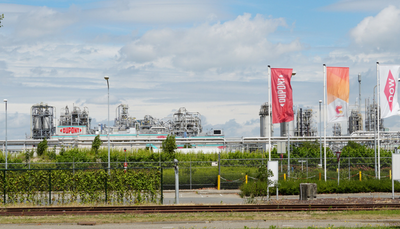How DuPont and Chemours Changed Drinking Water Forever
RSS
Analies Dyjak, M.A. | Head of Policy
North Carolina has been at the heart of a drinking water crisis. At least 1 million North Carolinians have been exposed to unsafe levels of an unregulated contaminant called Per and Polyfluoroalkyl Substances, PFAS, or "forever chemicals." The source of the contamination traces back to a fluorochemical operation in Fayetteville - causing widespread contamination in municipal drinking water and in private wells. This article will discuss two companies’ legal tactics to try and avoid liability, and how the victims of this tragedy continue to be left in the dark.
Polluter v. Polluter
You may already be familiar with the two companies at the root of this crisis in North Carolina. In short, DuPont had been manufacturing and distributing a category of chemicals called Per and Polyfluoroalkyl Substances or PFAS, since the 1980's. DuPont created Chemours - a spinoff company in charge of overseeing all fluoro-chemical operations, including the entire category of PFAS chemicals. In doing so, Chemours assumed direct liability for DuPont’s decades of chemical contamination - including all environmental and public health damages. According to the 2019 lawsuit, Chemours claimed that DuPont was not entirely forthcoming about the amount of damages the spinoff company was to incur. Chemours claimed that they were set up by DuPont to be “financially overwhelmed,” and ultimately bankrupt. When Chemours took over DuPont in 2015, they agreed to historical liabilities of no greater than $1.42 billion. Chemours claimed that DuPont wildly underestimated the totality of the liabilities. For example, the cost of one particular class action lawsuit, including 3,500 cancer and bodily harm claims associated with exposure to PFOA, was grossly underestimated. DuPont claimed that settlement would cost no greater than $128 Million, while Chemours ended up owing $671 Million for that case alone.
Chemours v. DuPont was ultimately dismissed by a Delaware judge in 2019. This was bad news for Chemours, and even worse news for the tens of thousands of individuals impacted by PFAS contamination. Both companies have been trying to delay and reorganize, in order to pay the absolute least amount of money to the state of North Carolina as possible. If you want to learn more about other Chemours’ litigation in North Carolina, click here. We also have an article about an unrelated case against DuPont, which you can find here.
North Carolina Attorney General Sues DuPont and Chemours
Soon after Chemours sued DuPont, the state of North Carolina turned around and sued both companies. On October 13, 2020, North Carolina Attorney General Josh Stein, sued DuPont and Chemours for PFAS contamination in the Cape Fear River. The single Chemours plant in Fayetteville has caused widespread PFAS contamination throughout several major North Carolina counties, including New Hanover, Bladen, Pender, and Brunswick. The recent lawsuit is calling for both Chemours and DuPont to pay for all “past and future costs, necessary to investigate, assess, remediate, restore, and remedy” all damages. We'll have updated information on our blog and social media (@hydroviv_h2o) as this story unfolds.How Has PFAS Impacted The State of North Carolina?
There's no way to fully estimate how this negligence has impacted North Carolinians. What we do know is that exposure to PFAS chemicals has been associated with a variety of negative health effects, including: an increased risk of cancer, decreased immune function, increased cholesterol, and more. In a study completed just this year, a team of Yale researchers found that exposure to PFAS increases the risk of miscarriage by 80-120%. A PFAS variety that's especially problematic in the Cape Fear River, called GenX, was deemed a "probable carcinogen" by EPA in 2018. On April 10, 2024, the US EPA has announced drinking water standards to limit exposure to 6 types of PFAS chemicals, including GenX. PFAS have been detected at levels well above public health recommendations in Wilmington, Leland, Winnabow, and other cities that draw water from the Cape Fear River and its tributaries.
What Can I Do?
Media coverage has been propelled by community organizers throughout impacted areas in North Carolina. Organizations like North Carolina Stop GenX in our Water, Cape Fear River Watch, Clean Cape Fear, and many others have “blown the whistle” on what’s going on in North Carolina. We recommend following these organizations, as well as our social media channels (@hydroviv_h2o) to stay up to date. It's important to point out that North Carolina is not the only state that has PFAS in its drinking water. Michigan, Minnesota, New York, New Hampshire, and California are just some of the states where PFAS have become a serious threat. The Environmental Working Group created a map which shows areas of the country with detectable levels of PFAS in drinking water. You can check out the map here.
If you are planning on purchasing a water filter, make sure that it’s rated to remove PFAS chemicals. Most pitcher, faucet, and countertop systems are unable to remove PFAS. Check out this PFAS filtration removal study completed by Duke and NC State.
Other Articles We Think You Might Enjoy:PFAS Detected in Several Popular Bottled Water Brands
5 Things You Need To Know About Drinking Water Right Now
How Did Hydroviv Filters Perform in a Duke University Filter Study?




